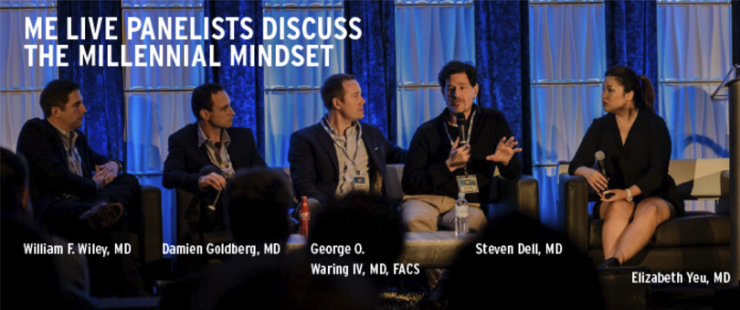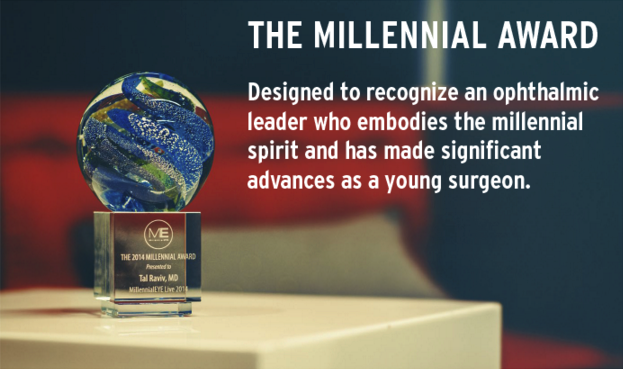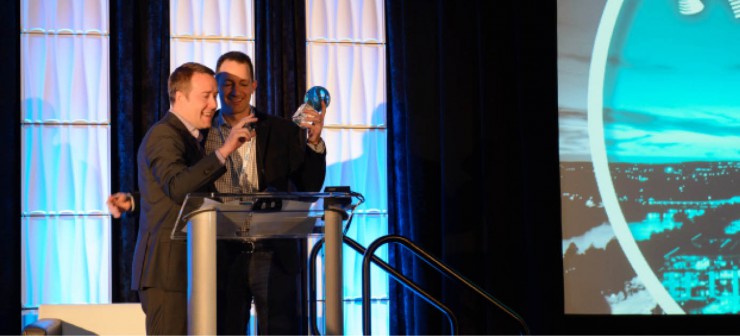
George O. Waring IV, MD, FACS:
The fundamental concept behind MillennialEYE and ME Live was to provide a forum that would allow ophthalmologists to think outside the box and share their thoughts freely in a way that captures the spirit of the millennials. In actuality, most ME contributors and readers have probably aged out of the millennial generation, but we are all of the view that millennial refers to a particular mindset, rather than a specific age group.
When we talk about millennials and their generational differences, it is important to recognize that we have not gotten here on our own. We are all beholden to the people who inspired us to become the ophthalmologists that we are today. Most of us would probably consider our mentors millennials because they were trailblazers, and they were once doing something different. Maybe you went on to join these individuals in practice, or maybe they helped you develop your practice patterns and your ideologies.
Just as there are characteristics that differentiate millennial ophthalmologists from their mentors, there are qualities that separated trailblazers like Steven Dell, MD, from his generational peers. Steven, when you started getting into practice, what were some of the differences between you and your mentors or the status quo at the time?
Steven Dell, MD:
Due to the nature of medicine, physicians are in somewhat of a prolonged adolescence because we go to school for so long. Essentially, you are a punk when you come out at age 31 and some of your contemporaries have been working for 10 years. That shapes our mindset in such a way that we tend to be more open to new things later in life than those in other professions. Further, in a surgically intense specialty like ophthalmology, the learning curve is so steep and our techniques are constantly being refined, contributing to this delayed maturation process.
I have been and still am viewed by many of my contemporaries as a punk, but there are some past lessons we can all learn from. When I started out in practice, we were doing radial keratotomy and automated lamellar keratoplasty, and, for a couple of years before the advent of laser vision correction, that was state of the art. We knew it wouldn’t last, but, at the time, it was very controversial. I knew that refractive surgery would eventually be revolutionized and that, even though the technology was in its infancy, it was worth the educational investment. It was worth traveling to Canada multiple times to study with those who had access to the technology. Doing what seemed controversial at the time paid off in a big way.


The 2014 Millennial Award, presented to Tal Raviv, MD.
Also, when I entered practice, working with optometry in any capacity was considered completely forbidden by many ophthalmologists. I thought that whole concept was silly. Looking at the demographic trends, it was clear that patient demand would come to outpace the supply of ophthalmologists and the only way to effectively treat them was through an integrated care model. It was obvious to me at a very early point that fighting with optometrists over patients was folly. Even our most conservative institutions have come to accept this fact.
Having a little foresight about where the industry is headed will pay rich dividends in the long run. I have always tried to imagine what things will be like 5 or 10 years down the road and position myself for that.
Dr. Waring:
When making those decisions, did you ever feel that you were stepping out of bounds to the point of being considered an outcast?
Dr. Dell:
Just doing refractive surgery branded you an outcast in those days. It was considered heresy to operate on a healthy cornea. Even in my training program, I got in trouble for doing sutureless cataract surgery. My chairman called me into his office and said, “I’ve never met a resident who didn’t need more suture practice, Dell.” I thought that was something we would all be doing, that eventually we wouldn’t be suturing our typical cases.
It is important to recognize that there is a contingent of ophthalmologists who will always view what you are doing as inappropriate if you are on the cutting edge. You have to become comfortable with that if you are being true to your patients and true to yourself.
Dr. Waring:
Bill, how do you feel your practice differs from your dad’s, who was also a trailblazer?
William F. Wiley, MD:
The amount of communication among colleagues is an extremely differentiating factor for the young generation of ophthalmologists. Recently, I was out of town traveling from Cleveland to Toledo in the middle of a snowstorm, when my practice got a call from a patient who had a Visian ICL (STAAR Surgical) implanted 1 week before and was nauseous and vomiting. She ended up having a pupillary block in one eye. I thought to myself, “How am I going to handle this case?” I was in the car, texting back and forth with my optometrist Jeffrey Augustine, OD, in Cleveland. Next, I decided to call George, who was sitting beside John Berdahl, MD, at a congress in New York. Because George was busy, I then called John Vukich, MD, who texted me back, saying he was in Singapore. Out of these various conversations, we reached the conclusion that the lens was overvaulted and a new one needed to be implanted. We called STAAR in California, and a new ICL was shipped overnight. It seemed like the whole world was involved in this one case; it was amazing. I think back to when my dad was practicing with no cell phone and no Internet. The age of communication is dramatically changing how we treat patients.
Damien F. Goldberg, MD:
We are also fortunate to be able to perform some procedures on the elective side. A lot of smaller groups of ophthalmologists and eye care professionals are collaborating; they are working together on communication, but they are also being forced to put their practice together. There is value in what we can do with our profession and the fact that we have this two-tiered system we can go through. The generation before us experienced that downer when cataract reimbursement changed, and some people are worried we are heading in the same direction. However, I see such value in the advances in technology and collaboration that I think we will get past that.
Dr. Waring:
Liz, you were in academics for several years and recently joined a progressive private practice. What are some aspects that surprised you about the practice in terms of innovative approaches to ophthalmology?
Elizabeth Yeu, MD:
It is 180° different being in academia versus being in a private practice that is larger and has a well-developed and sophisticated model, both on the business side and the clinical side. Our field is so technologically heavy and requires a great deal of commitment. For instance, we are all aware of the sophistication required to create a refractive cataract surgery practice. It is essential to have the collaborative efforts of those who are willing to help you take care of your patients and to have proper counselors and a commitment to patient education. To be part of a corporation or a practice that is committed to this team approach and has the means to be successful in that has been a unique learning experience for me.
Dr. Goldberg:
Thinking back to what Steven said about working with optometry, for a long time working with industry was also forbidden. However, as early adopters, many of us know how important it is to work together with industry. That is a new view and an important improvement.
Dr. Dell:
I don’t think there has ever been a single product implanted in a human that wasn’t the result of collaboration between industry and physicians. Everything we do, we owe to industry and physicians working together. In fact, the American-European Congress of Ophthalmic Surgery (AECOS) was created precisely to focus on that collaboration and is a society with equal membership between physicians and members of industry. We wear our collaboration with industry as a badge of honor. Maybe that’s progressive, but it is certainly essential.
